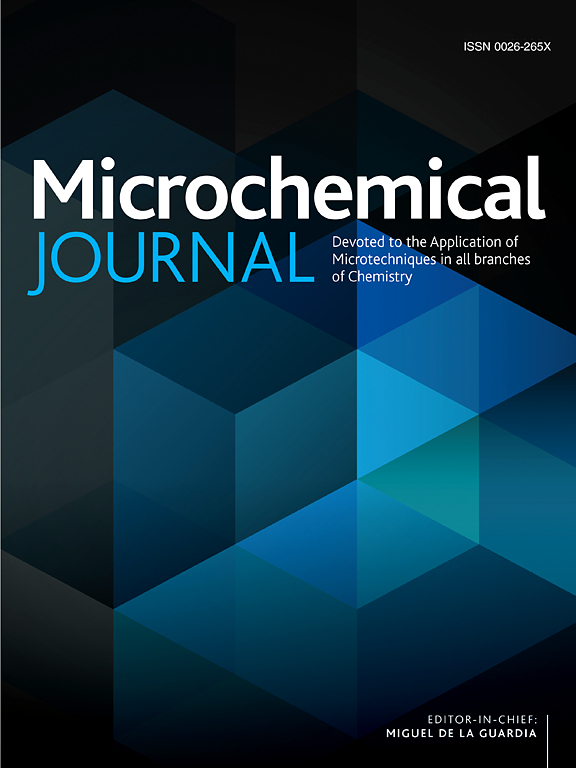Advancements in flow analysis coupled with liquid waveguide capillary cell for trace analysis in aquatic environments: A systematic review (2012–2024)
IF 4.9
2区 化学
Q1 CHEMISTRY, ANALYTICAL
引用次数: 0
Abstract
Trace substances in aquatic environments play a pivotal role in biogeochemical cycles and public health, necessitating accurate quantification for both scientific research and environmental monitoring. The integration of flow analysis (FA) with liquid waveguide capillary cell (LWCC) technology has emerged as a robust analytical approach, overcoming the sensitivity limitations inherent to conventional spectrophotometric methods. This review systematically evaluates the application of FA-LWCC systems for determining trace nutrients, metals, and other organic/inorganic compounds in aqueous matrices from 2012 to 2024. The present work has three principal objectives: (1) to perform a critical comparative analysis of different FA-LWCC systems, assessing their respective merits and limitations; (2) to comprehensively evaluate FA-LWCC applications for trace quantification of nutrients, metals, and other organic/inorganic compounds in aqueous media; and (3) to identify current methodological challenges and propose future research priorities. This comprehensive review highlights the advancements in FA-LWCC technology for trace analysis in environmental matrices, and aims to stimulate further innovation in this critical field of analytical chemistry. We anticipate that this work will serve as a valuable reference for researchers engaged in trace-level determinations, particularly those focused on aquatic systems.
流动分析耦合液体波导毛细管细胞用于水生环境痕量分析的进展:系统综述(2012-2024)
水生环境中的微量物质在生物地球化学循环和公共健康中发挥着关键作用,需要对其进行准确量化,以进行科学研究和环境监测。流动分析(FA)与液体波导毛细管电池(LWCC)技术的集成已经成为一种强大的分析方法,克服了传统分光光度法固有的灵敏度限制。本文系统评价了2012年至2024年FA-LWCC系统在测定水基质中微量营养素、金属和其他有机/无机化合物方面的应用。目前的工作有三个主要目标:(1)对不同的FA-LWCC系统进行批判性的比较分析,评估它们各自的优点和局限性;(2)综合评价FA-LWCC在水介质中营养物质、金属和其他有机/无机化合物痕量定量中的应用;(3)确定当前方法上的挑战并提出未来的研究重点。本文综述了FA-LWCC技术在环境基质中痕量分析方面的进展,旨在促进分析化学这一关键领域的进一步创新。我们预计这项工作将为从事痕量水平测定的研究人员提供有价值的参考,特别是那些专注于水生系统的研究人员。
本文章由计算机程序翻译,如有差异,请以英文原文为准。
求助全文
约1分钟内获得全文
求助全文
来源期刊

Microchemical Journal
化学-分析化学
CiteScore
8.70
自引率
8.30%
发文量
1131
审稿时长
1.9 months
期刊介绍:
The Microchemical Journal is a peer reviewed journal devoted to all aspects and phases of analytical chemistry and chemical analysis. The Microchemical Journal publishes articles which are at the forefront of modern analytical chemistry and cover innovations in the techniques to the finest possible limits. This includes fundamental aspects, instrumentation, new developments, innovative and novel methods and applications including environmental and clinical field.
Traditional classical analytical methods such as spectrophotometry and titrimetry as well as established instrumentation methods such as flame and graphite furnace atomic absorption spectrometry, gas chromatography, and modified glassy or carbon electrode electrochemical methods will be considered, provided they show significant improvements and novelty compared to the established methods.
 求助内容:
求助内容: 应助结果提醒方式:
应助结果提醒方式:


